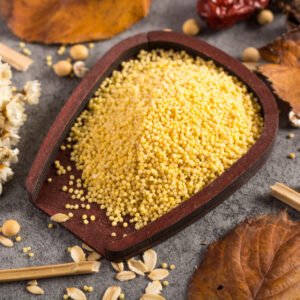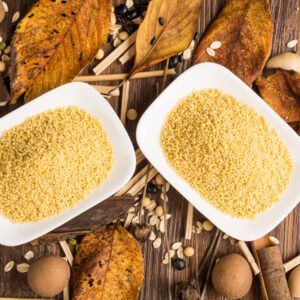When walking through grocery stores or discussing agricultural products, you’ve likely encountered both terms “maize” and “corn” used interchangeably. This linguistic confusion has puzzled consumers, farmers, and even agricultural professionals for generations. While these terms often refer to the same plant scientifically known as Zea mays, the distinction between maize and corn carries significant cultural, regional, and agricultural implications that every industry stakeholder should understand.
At CMS Industries, with over 20 years of expertise in agricultural exports, we recognize the importance of precise terminology in global trade. Understanding these differences isn’t just academic—it directly impacts international commerce, agricultural practices, and consumer education. This comprehensive guide will illuminate the fascinating distinctions between maize and corn, exploring their historical origins, regional preferences, agricultural applications, and commercial significance.
Historical Origins and Etymology
The story of maize versus corn begins thousands of years ago with ancient civilizations. The word “maize” derives from the Spanish “maíz,” which originated from the Taíno word “mahiz” used by indigenous peoples of the Caribbean. When Spanish explorers encountered this remarkable crop in the Americas, they adopted the native terminology, which eventually spread throughout European languages.
Conversely, the term “corn” has Anglo-Saxon roots, historically referring to any grain or cereal crop. In medieval England, “corn” described wheat, barley, or oats—whatever grain was most prevalent in a particular region. When English colonists arrived in North America and encountered the indigenous grain that Spanish explorers called maize, they naturally referred to it as “corn” since it became their primary grain crop.
This historical divergence explains why British English speakers often use “maize” while American English speakers prefer “corn.” The terminology reflects not just linguistic preferences but also cultural and agricultural heritage that has persisted for centuries.
Regional Usage and Cultural Significance
Understanding regional terminology patterns reveals fascinating insights into global agricultural practices and cultural preferences. In the United States and Canada, “corn” dominates everyday vocabulary, agricultural documentation, and commercial trade. American farmers plant corn, harvest corn, and export corn to international markets. This usage reflects the crop’s central role in North American agriculture and cuisine.
European countries, Australia, and many former British colonies predominantly use “maize” in both casual conversation and official agricultural contexts. The European Union’s agricultural policies, trade agreements, and scientific literature consistently employ “maize” as the standard terminology. This preference often extends to international organizations and academic institutions worldwide.
In many developing countries, particularly in Africa and Latin America, local languages have their own terms for this versatile grain. However, when communicating in English for international trade or scientific purposes, these regions typically adopt “maize” as the preferred terminology, aligning with international agricultural standards.
The choice between these terms often reflects more than mere preference—it can indicate educational background, regional identity, and professional context. Agricultural scientists generally prefer “maize” for its precision and international recognition, while local farmers might use whatever term is common in their community.
Agricultural and Botanical Perspectives
From a strictly botanical standpoint, maize and corn represent identical plants: Zea mays, a member of the grass family Poaceae. However, agricultural professionals often make subtle distinctions based on usage, processing methods, and end applications.
Agricultural scientists typically use “maize” when discussing the plant in academic contexts, genetic research, or international scientific publications. This terminology provides clarity in global research collaboration and maintains consistency with international botanical nomenclature. Research papers examining drought resistance, yield optimization, or genetic modification almost exclusively use “maize” to ensure universal understanding.
Field corn, which represents approximately 99% of corn production in the United States, is primarily used for animal feed, industrial applications, and processed food ingredients. Sweet corn, the variety consumed directly by humans, represents a small fraction of total production but receives significant consumer attention.
The agricultural industry recognizes several distinct categories: dent corn (field corn), sweet corn, popcorn, flint corn, and flour corn. Each variety serves specific purposes, from livestock nutrition to human consumption, industrial manufacturing to traditional cultural practices. Understanding these distinctions becomes crucial for agricultural exporters, food processors, and international traders.
Modern agriculture has developed numerous hybrid varieties optimized for specific growing conditions, nutritional profiles, and end uses. Genetically modified varieties have introduced traits like herbicide resistance, pest resistance, and enhanced nutritional content, further diversifying the agricultural landscape surrounding this versatile crop.
Commercial and Industrial Applications
The commercial distinction between maize and corn often relates to processing methods and end products rather than the basic plant material. Industrial applications frequently employ “maize” terminology, particularly in international trade documentation, scientific research, and technical specifications.
Food processing industries utilize various maize derivatives including corn starch, corn syrup, corn oil, and corn meal. Each product serves distinct market segments, from food manufacturing to industrial applications. High fructose corn syrup, widely used in beverage production, exemplifies how processing transforms basic maize into sophisticated commercial products.
The biofuel industry has created substantial demand for corn ethanol, representing a significant portion of U.S. corn production. This application demonstrates how traditional agricultural products can serve modern energy needs while supporting rural economies and reducing petroleum dependence.
Animal feed represents the largest single use of corn production, supporting livestock, poultry, and aquaculture industries worldwide. Corn’s nutritional profile, availability, and cost-effectiveness make it indispensable for modern animal agriculture. Feed formulations carefully balance corn with other ingredients to optimize animal growth, health, and production efficiency.
Export markets present unique terminology challenges, as different countries expect specific language in trade documentation. International grain traders must navigate these preferences while ensuring clear communication and regulatory compliance across diverse markets.
Nutritional and Processing Differences
While maize and corn refer to the same plant, processing methods create significant nutritional and culinary distinctions. Whole grain corn provides fiber, vitamins, and minerals, while highly processed corn products may lose much of their nutritional value during manufacturing.
Traditional processing methods like nixtamalization, used in Mexican cuisine to create masa, actually enhance nutritional availability by increasing calcium content and improving protein quality. This ancient technique demonstrates how processing can improve rather than diminish nutritional value.
Sweet corn, consumed fresh or frozen, provides different nutritional benefits compared to field corn used in processed foods. Fresh sweet corn contains higher sugar content and different vitamin profiles, while field corn typically undergoes extensive processing before human consumption.
Corn oil extraction produces both refined cooking oil and protein-rich meal used in animal feeds, maximizing economic value while serving diverse market needs. Similar processing approaches are also used to create corn starch, corn gluten, and various other specialized products, contributing to the growth of the Top 10 Starch Manufacturers in India.
The growing demand for organic and non-GMO corn reflects consumer preferences for less processed, more natural food options. These market segments often command premium prices while requiring specialized production and handling practices throughout the supply chain.
Global Trade and Economic Impact
International corn trade represents one of the world’s largest agricultural commodities markets, with billions of dollars in annual transactions. The United States, Argentina, Brazil, and Ukraine rank among the world’s largest corn exporters, while countries like Japan, Mexico, and Egypt import substantial quantities to meet domestic demand.
Trade documentation and international agreements typically specify whether transactions involve “corn” or “maize,” with terminology often following regional preferences or established trading relationships. American exporters generally use “corn” in documentation, while European buyers might prefer “maize” in their specifications.
Price discovery mechanisms, including futures markets and commodity exchanges, play crucial roles in global corn trade. The Chicago Board of Trade corn futures contract serves as a global price benchmark, influencing farming decisions, export strategies, and food security policies worldwide.
Climate change impacts on corn production affect global supply chains, food security, and agricultural trade patterns. Drought conditions, extreme weather events, and shifting growing zones create both challenges and opportunities for corn producers and traders worldwide.
Developing countries often rely on corn imports to ensure food security, making global trade relationships and terminology standards critical for effective international cooperation. Food aid programs, emergency relief efforts, and development initiatives frequently involve large-scale corn transactions requiring clear communication and standardized terminology.
Future Trends and Innovations
Agricultural technology continues transforming corn production through precision farming, genetic enhancement, and sustainable practices. Drone technology, satellite monitoring, and artificial intelligence optimize planting, fertilization, and harvesting decisions, improving yields while reducing environmental impact.
Climate-adapted varieties developed through both traditional breeding and genetic modification help farmers cope with changing weather patterns, water availability, and pest pressures. These innovations ensure continued corn production despite environmental challenges.
The growing emphasis on sustainability drives research into reduced-input production systems, soil health improvement, and carbon sequestration in corn farming. Cover crops, reduced tillage, and integrated pest management represent evolving approaches to environmentally responsible corn production.
Alternative uses for corn continue expanding, from biodegradable plastics to pharmaceutical applications, creating new market opportunities while reducing dependence on petroleum-based products. These innovations demonstrate corn’s versatility beyond traditional food and feed applications.
Consumer preferences increasingly influence corn production decisions, with demand for organic, non-GMO, and locally-produced corn affecting farming practices and supply chain organization. These trends require agricultural producers to balance economic efficiency with market differentiation strategies.
Conclusion
The distinction between maize and corn extends far beyond simple terminology, encompassing cultural heritage, regional preferences, scientific precision, and commercial considerations. While both terms refer to the same remarkable plant that has sustained civilizations for millennia, understanding their usage patterns enhances communication effectiveness in global agricultural markets.
For agricultural professionals, international traders, and industry stakeholders, recognizing these distinctions facilitates clearer communication, more effective marketing, and better customer relationships. Whether you’re exporting field corn from Iowa or importing maize for food processing in Europe, terminology awareness demonstrates professional competence and cultural sensitivity.
At CMS Industries, our commitment to agricultural excellence includes understanding these nuanced distinctions that matter to our global partners. As we continue serving international markets with quality agricultural products, we recognize that clear communication and cultural awareness form the foundation of successful long-term relationships.
The future of corn production and trade will likely see continued evolution in terminology, applications, and market dynamics. Staying informed about these changes ensures continued success in the global agricultural marketplace, where precision in language reflects precision in business practices.
Understanding the difference between maize and corn isn’t just about vocabulary—it’s about respecting cultural diversity, maintaining professional standards, and building bridges across the global agricultural community that feeds our world.
Frequently Asked Questions
Q1: Is there any actual difference between maize and corn as plants?
No, maize and corn refer to the same plant species, Zea mays. The difference lies purely in terminology preferences across different regions, cultures, and professional contexts, not in the plant itself.
Q2: Why do Americans say corn while Europeans say maize?
Americans inherited the term “corn” from English colonists who used it for any grain crop. Europeans adopted “maize” from Spanish explorers who learned it from indigenous peoples, maintaining this terminology in international contexts.
Q3: Which term should I use in international agricultural trade?
Use the term preferred by your trading partners or target markets. American buyers typically expect “corn,” while European and many international buyers prefer “maize.” Check documentation standards for specific regions.
Q4: Do sweet corn and field corn have different names?
Both varieties use either terminology – sweet corn/sweet maize and field corn/field maize. The distinction lies in variety type and intended use rather than the basic naming convention used.
Q5: How do scientific researchers refer to this crop?
Agricultural scientists predominantly use “maize” in research publications, academic papers, and international scientific collaboration to maintain consistency with global botanical nomenclature and ensure universal understanding across different English-speaking regions.





